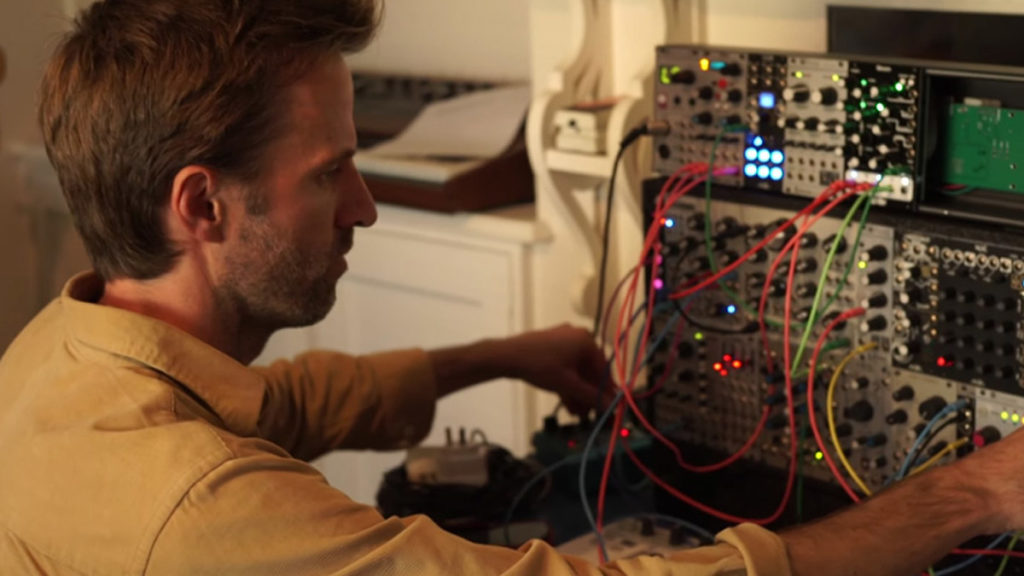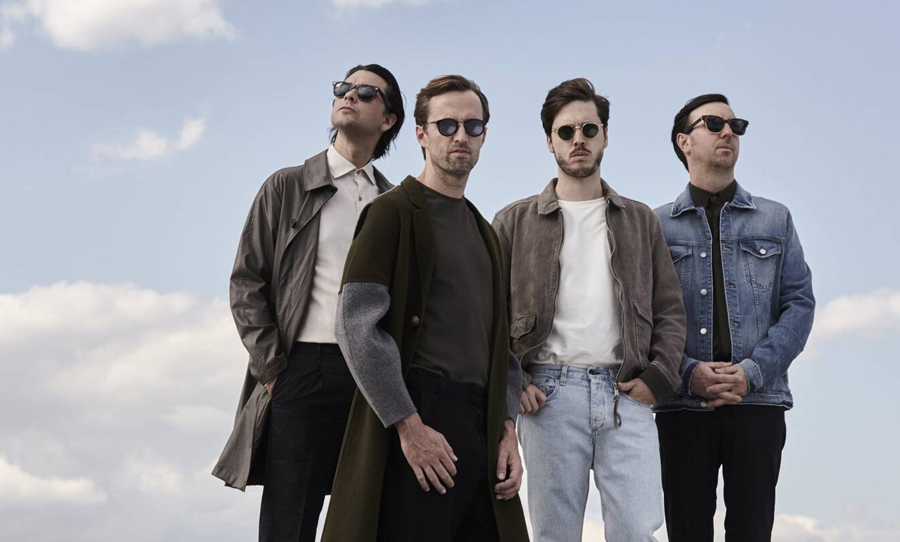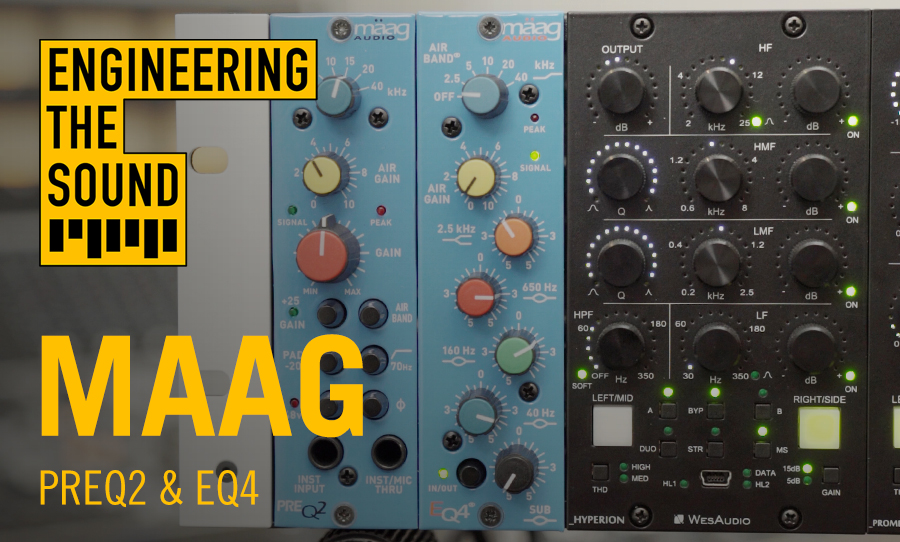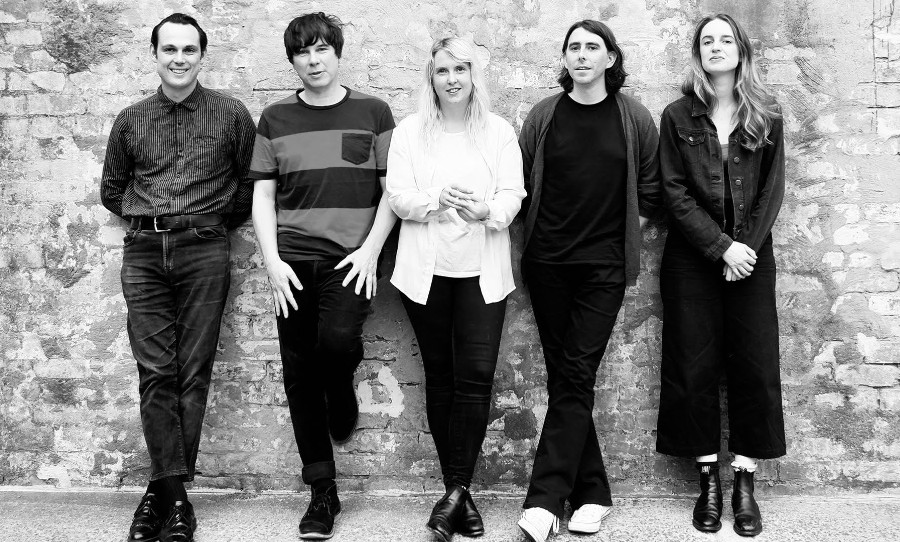Cut Copy’s Dan Whitford chats the band’s new direction, his Scandinavian adventure and the cutting edge sounds of Freeze, Melt.
Cut Copy has been a formidable presence on the Australian electronic scene for the best part of twenty years. The band’s immediately recognisable sound — created by Dan Whitford, Tim Hoey, Mitchell Scott and Ben Browning — was forged in a golden age of naughties indietronica. Now, they’re on the cusp of a new era with their sixth album, Freeze, Melt.
In between their last release — 2017’s Haiku from Zero — and now, the band has sought inspiration from a disparate range of sources, with lead singer and songwriter Whitford gaining a different perspective from his move to Denmark. He took some time out to tell us about how this change of scenery informed the band’s new direction and how it resulted in an album could only have been crafted today.
ENMORE AUDIO: Freeze, Melt was imagined in the cold Denmark winter. Can you tell us how the location inspired you?
DAN: I relocated to Copenhagen a few years back and I was over there for three or so years. That was the first time I’ve lived anywhere besides Melbourne, so it was a completely new place, where I didn’t know anyone. I didn’t bring any significant gear from my studio — I just had my laptop, guitar and keyboard. I didn’t bring any records or anything, so it was very much like a blank canvas.
The city itself was a cool place to be, with lots of stuff to check out but obviously, it was northern Europe — the climate’s different, the landscape’s different, the language is different. So with a new beginning, things went off in a non-standard direction, very different from how we would usually approach a Cut Copy album.
Everyone in the band — even though we’re not living in the same place — is kind of invested in the idea of trying something new and felt that this was a good time to launch into something that we haven’t done before.
ENMORE AUDIO: It’s definitely reflected in the record and markedly different from Haiku from Zero. Were the recordings made back in Melbourne though?
DAN: Well, the songs were written in Copenhagen, and I did a lot of recording there because I set up a studio. Tim (Hoey, guitarist) did some recording in New York and we did a final recording session with the whole band in Australia last year and that was where we went through everything to shake out the best parts of what we’ve been working on and complete it. After that final stage, we pretty much had an album.
ENMORE AUDIO: And you sent that off to be mixed by Christoffer Berg in Sweden. What was behind that decision?
DAN: We liked a lot of the work that he’d been involved in. He worked on a couple of records by The Knife and also Depeche Mode. He also does a lot of soundtrack work. So given that the album was more atmospheric and mood-driven, we thought that he’d be a really good person to work on it.
The final cherry on top was the fact that he’s in Sweden. The record had started by me living over there in Scandinavia and it felt like it gave the whole process closure by going back there to complete it.
ENMORE AUDIO: Apparently there was a special Neve desk involved. Did any of the mojo rub off on the record?
DAN: I hope so! Some pretty good records were made with that desk. I’m sort of a geek with music history, so even just thinking that this was the desk that Brian Eno‘s been pushing the faders up and down on, or Freddie Mercury has been running his vocals through it. There’s a fantastic lineage of artists that have worked on that desk, and now our name gets included in that list, in some fine print down at the bottom. It’s kind of nice to be connected to that.
ENMORE AUDIO: It’s a fantastic story in its own right for sure. Turning towards the visual language of the record, the clips directed by Takeshi Murata are incredibly minimal. Is that something you’re trying to consciously reflect in the music?
DAN: Yeah definitely. There’s probably a lot of parallels between us, both in terms of that minimalism and the synthetic nature of his work. This album is the most synthetic that we’ve made. The worlds that he creates are very much in line with that — almost real, but too perfect to be a real thing.
We just hit him up because we thought it would be cool to get someone to create visuals for the whole album. He got back to us straight away because he was a big fan of our music and we were stoked. It was a perfect match!
I like the idea of “less is more” which is what the music’s doing, but I think the visuals as well. It also leaves the listener, or the viewer, open to draw their own conclusion. I find it a lot more compelling when you’re creating your own meaning.
ENMORE AUDIO: The album breaks away from some of Cut Copy’s previous indie-electronic blends. Tighter sequences, intimate, dryer and more up-front vocals. Was there a particular inspiration for that direction?
DAN: Just modern music, in a nutshell. There has probably been a lot of things that we’ve done as a band since day one, whether it be our sounds, process, or how we record things. I wanted to make an album that it could only have been made now, where the sounds are modern, where all the processes are things that could only occur now.
These are the kind of records from the past that I love. I love them, but I think they were shooting for the most modern, crazy things that they could. I might like the sonic qualities of a ’70s record — how warm everything sounds — but shooting for that now seems a bit redundant.
The best thing to be doing is to try to be as futuristic as possible. That was our mindset in making this album. Let’s not be referential. Let’s not be retro. The record should be something that sounds new for us and new in a modern musical context.
ENMORE AUDIO: Even though it has a fresh aesthetic, in a philosophical sense, it reaches back in some ways to the beginnings of electronic music, with that Kraftwerk kind of straightness and the spaciousness of Tangerine Dream and maybe Eno as well.
DAN: Oh, for sure.
ENMORE AUDIO: There’s a blend of intimate, close-miked sounds — the first vocal appearance on Cold Water springs to mind — then a big ambience, for example, the drums on Breaking Glass. Was the juxtaposition deliberate, or was it just a reflection of what headspace you were in at the time?
DAN: Definitely. Some of the stuff I’ve been interested in recently is the idea of a dry sound and setting it against a big, cavernous sound. Traditionally, when you’re recording a band, you’re trying to capture the idea of that band in a particular space. But as modern recording technology has changed, you can do some pretty far-out things, like making the singer sound like they’re a foot in front of you, then a minute later, make it sound like they’re in some huge warehouse.
These sonic tricks are quite interesting. They create a weird picture for you in your mind of where the music exists and this is an immersive album. I want people to really get lost in it. So having these different spaces and different relationships of different sounds together helps create that story and allows people to visualise it in their brains.
ENMORE AUDIO: The same dichotomy seems to apply to the digital and analog flavours that run through the album. On the track Love is All We Share it sounds like a big 808 in the introduction — which is coupled with strange, digital bit-crushing. Do you think it was important for the record to inhabit both of these worlds?
DAN: I think it’s more interesting that way. I find that if something strays in one direction too much, it becomes far less appealing. If something becomes too electronic, your ears immediately lose interest. It needs some kind of gritty, organic element, something that could only exist in the real world, placed alongside the digital elements.
ENMORE AUDIO: Were there any favourite pieces of gear that helped you achieve that?
DAN: There were definitely some go-to items that I used quite a lot on the album. One big one was the [Critter & Guitari] Organelle. I guess it’s like a little computer basically, but it looks like a little toy keyboard. That’s one of those things that could only really exist on a record now.
I did a lot of filtering with that but also synthesized sounds. For instance, most of the track Cold Water comes from mucking around on that. I also started getting into some Eurorack modular stuff, which has become a subculture in its own right and just out of curiosity, I started experimenting with it.
I like a lot of that stuff because it gets you out of working directly into a computer. You can get a bit more hands-on and use your ears more rather than just looking at blocks in a sequencer on a screen. You’re using your ears to manipulate a sound and using your hands to change frequencies or filter a sound. At the very beginning point of a lot of the songs, I’d just be noodling around on the modular, by the end of the day I would come up with something that would turn into a song the next day.
ENMORE AUDIO: If and when you’re able to tour again, how do you plan to bring these songs to the stage?
DAN: We actually did a couple of shows, literally just before the lockdown. We did a gig in Adelaide, then one with New Order in Melbourne, they were pretty much the last two shows ever! We played Cold Water during those shows, so at least we had a chance to play some new material. But as far as the whole album is concerned, we haven’t quite worked that out yet.
The sounds are quite different, so we may need to use some slightly different gear, but it would be a matter of how that integrates into the rest of our catalogue as well.
ENMORE AUDIO: Well, I can’t wait to see the show when we can all start going to gigs again!
DAN: Oh man, tell me about it! Can’t wait!
Freeze, Melt is out on August 21. For more details, visit the Cut Copy website.




